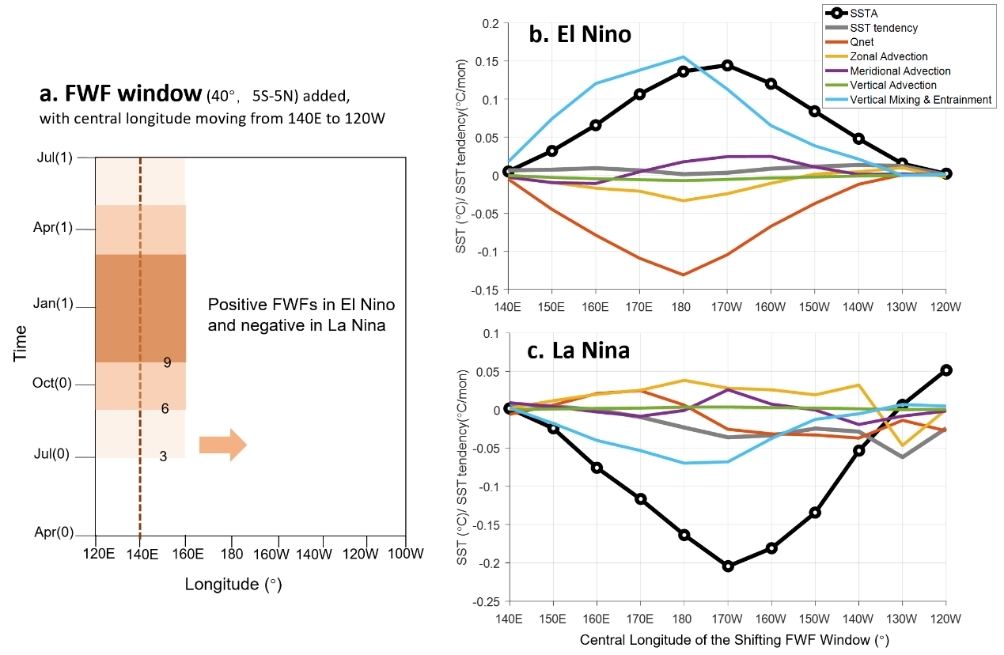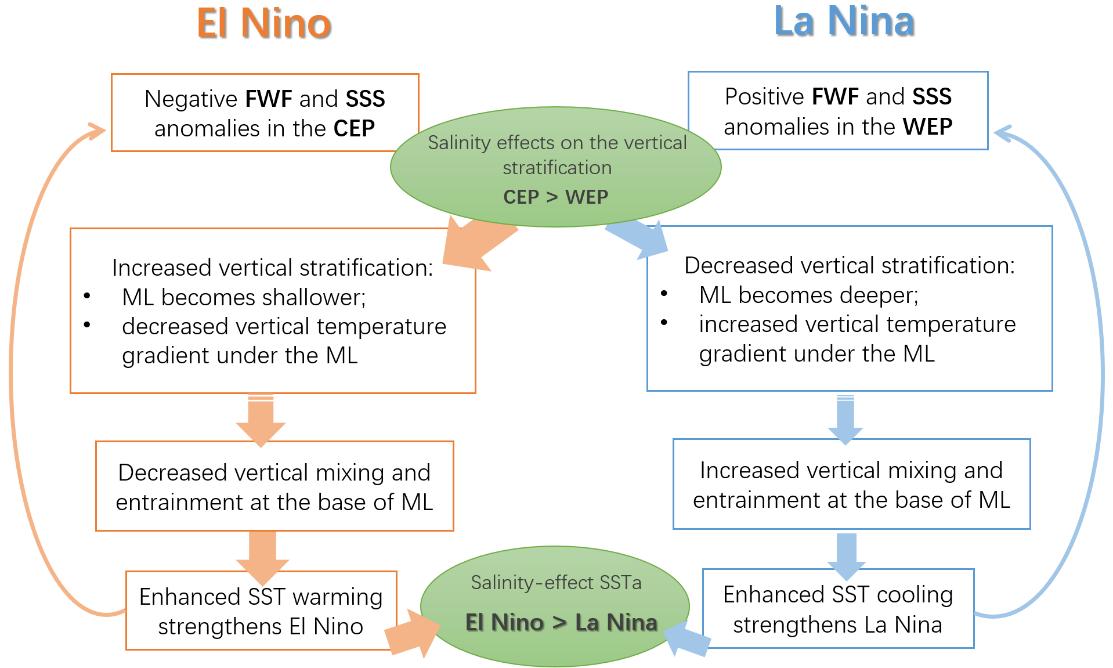Complexity of El Nino-Southern Oscillation (ENSO) has been a long-standing issue and key to improving forecast model skill. Understanding the amplitude and spatial asymmetry in sea surface temperature (SST) between warm phase (El Nino) and cold phase (La Nina), is particularly challenging.
Salinity is suggested to have active impacts on the development of ENSO events, but its roles in ENSO asymmetry are poorly understood.
Recently, a research team led by Prof. WANG Fan from the Institute of Oceanology of the Chinese Academy of Sciences (IOCAS) has revealed the mechanisms of ENSO asymmetry from the new perspective of ocean salinity for the first time.
The study was published in Geophysical Research Letters.
Based on observations of Argo floats and satellite, it is found maximum salinity anomalies occur in the central equatorial Pacific (CEP) during El Nino and in the western equatorial Pacific (WEP) during La Nina, with differences characterized as a dipole structure.
"Such difference in sea surface salinity (SSS) anomalies in response to ENSO asymmetry produces a similar dipole of barrier layer via changing ocean density stratification, indicating its potential influence on ENSO SST asymmetry in turn," said Dr. GUAN Cong, the first author.
The role of salinity in affecting ENSO intensity and asymmetry are further examined in ocean general circulation model simulations by modifying freshwater flux. Results show that El Nino and La Nina amplitudes are both highly sensitive to zonal patterns of salinity anomalies, with the strongest SST anomalies occurring when maximum salinity anomalies are located near 170°W in the CEP.
Furthermore, the effect of salinity anomalies on El Nino warming in the CEP is larger than that on La Nina cooling in the WEP. Thus, the asymmetric salinity anomalies strengthen the asymmetry of temperature anomalies between El Nino and La Nina.
"Our results emphasize the importance of salinity in affecting ENSO asymmetry. It is expected to enrich the understanding of the complexity characteristics of ENSO," said Prof. WANG.

Fig. 1 Argo-based interannual anomalies of sea surface salinity (SSS), barrier layer thickness (BLT) and sea surface temperature (SST) during mature phases of El Nino, La Nina, and also their differences in the tropical Pacific.

Fig. 2 Design and results of sensitivity experiments on ENSO intensity affected by different latitudinal locations of freshwater-induced SSS anomalies

Fig. 3 Schematic diagram illustrating the effects of different zonal patterns of SSS anomalies on ENSO temperature intensity and asymmetry
Guan, C., Tian, F., McPhaden, M. J., Wang, F.*, Hu, S., & Zhang, R.-H. (2022). Zonal structure of tropical Pacific surface salinity anomalies affects ENSO intensity and asymmetry. Geophysical Research Letters, 49, e2021GL096197.
Guan, C., Hu, S., McPhaden, M. J., Wang, F.*, Gao, S., & Hou, Y. (2019). Dipole structure of mixed layer salinity in response to El Nino-La Nina asymmetry in the tropical Pacific. Geophysical Research Letters, 46, 12,165-12,172. https://doi.org/10.1029/2019GL084817.
GUAN Cong
Institute of Oceanology
E-mail: congguan@qdio.ac.cn
(Editor: ZHANG Yiyi)
|
|

Address: 7 Nanhai Road, Qingdao, Shandong 266071, China
Tel: 86-532-82898902 Fax: 86-532-82898612 E-mail: iocas@qdio.ac.cn


